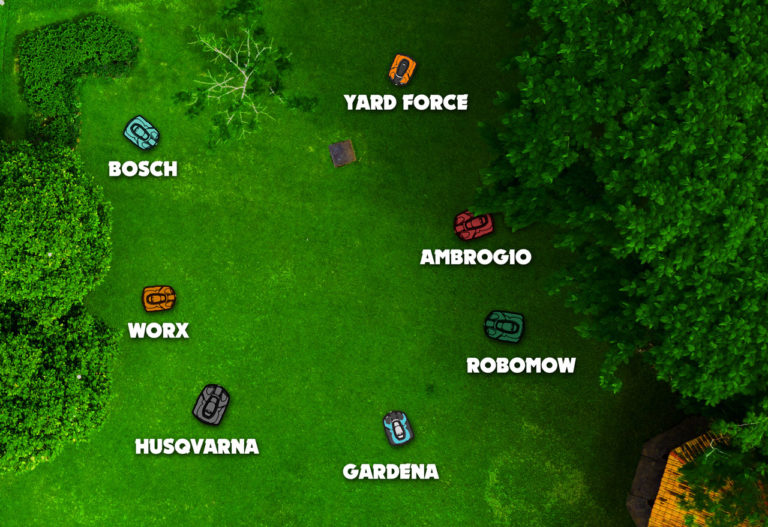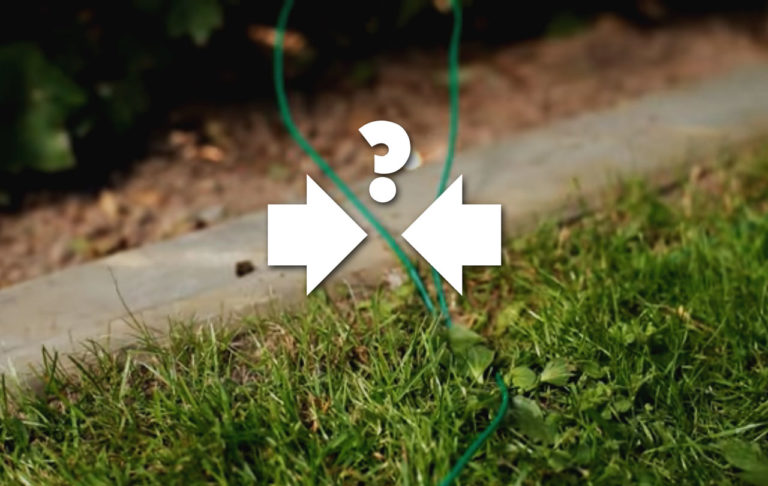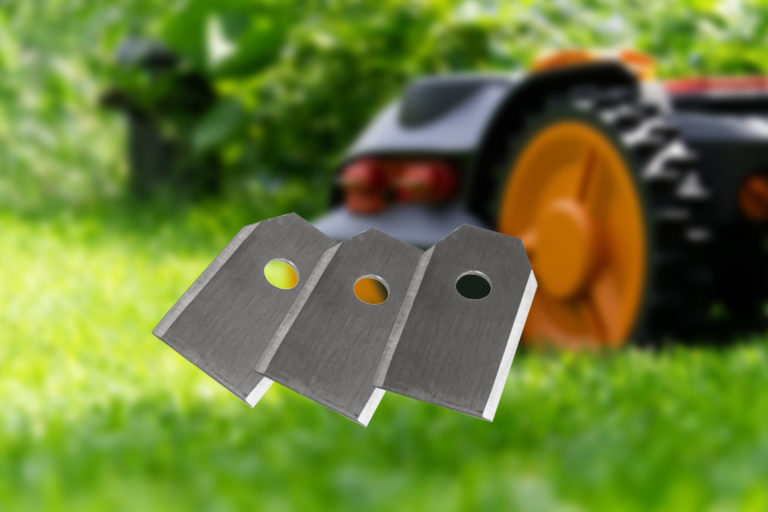If you have never experienced a robotic mower in operation, you will naturally ask yourself: “How loud are robotic mowers actually?” Since they are in operation longer than a conventional lawnmower, this is an important question to be answered. In addition, it is good to know when you are allowed to start up the robotic mower without disturbing anyone. I have examined these questions in detail.
Due to their design and mode of operation, robotic mowers can be noisy in different ways. In general, however, they are significantly quieter than lawn mowers, reaching between 55 dB and 75 dB. How loud they actually are in the end depends on the model and the associated structural features, such as the mowing unit or the engine, as well as the proper maintenance of the robotic mower. Robotic mowers below 60 dB can sometimes mow under certain circumstances where ordinary lawn mowers are not allowed to do so.
I explore this topic in more detail in the article below.
Contents
How loud is loud? Info about decibel levels
The volume of robotic mowers, as with virtually all other devices, is measured in decibels. But what does that actually mean? Unlike meters or grams, for example, this is not a metric unit, but a scale of a metric unit, e.g. the sound pressure in Pascal.
The whole thing can get quite complicated if you go deeper into the matter. We will therefore only superficially go into the most important things here.
The decibel scale is a logarithmic scale, which in this case means that a change of +10 dB is equivalent to a perceived doubling of the volume. It is therefore very similar to the Richter scale for indicating the strength of an earthquake.
This scale is chosen because the human ear can perceive small changes in absolute loudness at low volume, whereas larger changes are necessary at higher volume to perceive a loudness.
A robotic mower with 70 decibels therefore appears much louder than one with 60 decibels.
The decibel value always refers to the distance from the noise source
The decibel value is always in proportion to the distance to the noise source. So you would actually have to say that at a distance of X meters the volume is 60 decibels.
However, this is often omitted from the data and instead a typical distance is assumed. At the same time, the volume decreases by 6 decibels with each doubling of the distance. So if a robotic mower has a sound level of 70 decibels at a distance of 4 meters, it is only about 64 decibels loud at a distance of 8 meters. Unfortunately, manufacturers often do not give precise information about the distance at which the specified volume was measured.
Here are some examples of the emitted volume in decibels at typical distance:
- Room fan 35 dB
- Quiet radio music 50 dB
- Normal conversation 60 dB
- Gas-powered lawn mower 80 dB
- Circular saw 100 dB
Data from legal regulations on noise limits, on the other hand, refer to the volume measured at the property boundary with the neighbor). This also makes sense, because if you have a very large property and you let your robotic mower drive at a great distance from the neighbor, it is unlikely to disturb them.
For example, if the legal limit for noise pollution past 8 p.m. is 50 decibels and the robotic mower has a sound level of 68 decibels at a distance of 4 meters, the robotic mower must not be allowed to drive closer than 32 meters to the neighboring property in order not to exceed this limit. This is only an example, however. It actually depends on your state or country, if there is a limit and if so, what the actual allowed number of decibels are.
What is the quietest robotic mower?
The robotic mowers from HUSQVARNA, MCCULLOCH and GARDENA are among the quietest models. This is mainly due to the fact that they mow with a disc to which three blades are attached. Since these blades are very light – they weigh only about 2 grams – the engine also requires less power, which in turn makes it quieter.
In addition, they use particularly quiet engines and the mower deck is constructed in a particularly intelligent way so that as little noise as possible is generated. HUSQVARNA, MUCCULLOCH and GARDENA are all part of the Husqvarna Group AB, which is why they all use the same technology at the lowest level.
How loud is the loudest robotic mower?
Robotic mowers from the competition (e.g. ROBOMOW, AMBROGIO, WIPER) usually mow with a star-shaped blade, which requires much more power and therefore also a stronger engine with higher sound emission.
Among the loudest robotic mowers are the models from ROBOMOW. Some models reach a volume of 74 decibels. This means they are louder on average than robotic mowers from MCCULLOCH and HUSQVARNA, but they are still just about half as loud as a gas-powered lawnmower, for example.
Volumes of known robotic mower models
- AMBROGIO L200 Carbon Blackline: 65 dB
- AMBROGIO L85 Elite: 65 dB
- HONDA Miimo HRM310: 58 dB
- HONDA Miimo HRM520: 58 dB
- HUSQVARNA Automower 115H: 59 dB
- HUSQVARNA Automower 305: 59 dB
- HUSQVARNA Automower 310: 58 dB
- HUSQVARNA Automower 315: 60 dB
- HUSQVARNA Automower 315X: 60 dB
- HUSQVARNA Automower 430X: 58 dB
- HUSQVARNA Automower 430XH: 58 dB
- HUSQVARNA Automower 435X AWD: 62 dB
- HUSQVARNA Automower 450X: 58 dB
- HUSQVARNA Automower 450XH: 58 dB
- HUSQVARNA Automower 535 AWD: 62 dB
- HUSQVARNA Automower 550: 61 dB
- HUSQVARNA Automower 550H: 63 dB
- MCCULLOCH ROB R1000: 59 dB
- MCCULLOCH ROB S400: 57 dB
- MCCULLOCH ROB S600: 57 dB
- REDBACK POWER RM18: 65 dB
- REDBACK POWER RM24: 65 dB
- ROBOMOW RC306: 64 dB
- ROBOMOW RS612: 74 dB
- ROBOMOW RS622: 74 dB
- ROBOMOW RS630: 74 dB
- ROBOMOW RX20: 69 dB
- WORX Landroid L 20V WR150: 63 dB
- WORX Landroid L 20V WR153: 63 dB
- WORX Landroid M 20V WR140: 63 dB
- WORX Landroid M 20V WR143: 63 dB
This is why robotic mowers vary in volume
Robotic mowers produce different levels of noise for different reasons. Part of this has to do with their weight. As mentioned above, a lighter mowing unit, such as one using a blade disc, also requires a smaller and therefore lighter motor for the rotation shaft of the blades.
The weight saved means that the motor for the wheel drive can also be smaller. Smaller motors not only generate less noise, but also consume less energy and a smaller and lighter battery can be used.
Larger robotic mowers sometimes have two shafts, which doubles the cutting width of the robotic mower and allows more area to be mowed in the same amount of time, but the volume also increases at the same time.
Over time, robotic mowers can become louder
The operating volume of a robotic mower may increase over time. This may be due to, among other things, dried lawn residues having settled on the underside of the robotic mower. In such a case, you should clean your robotic mower thoroughly. Even after longer breaks you should take a look inside the mower to make sure that nothing has gotten in there that could affect the mower.
Over time, a robotic mower may begin to produce a noise some describe as “singing” or “howling”. This can occur especially after a long period of operation.
This problem was reported particularly frequently with the somewhat older models of some manufacturers. This is not due to inadequate maintenance, but rather to a design fault on the part of the manufacturer, as the problem is usually due to one of the engines. In such a case you should contact the manufacturer.
If in doubt, you can record the noise as proof that something is wrong, or use an app for sound measurement (Decibel X for iPhone, Sound Meter for Android) to determine whether the sound emission is still within the manufacturer’s specifications.
Another possibility to at least reduce the noise emission of the mower engine is to install a sliding plate. However, these are not easy to obtain especially in the US. Here is an example of a sliding plate on eBay from a seller in Germany for HUSQVARNA Automowers 420 430x 440 and 450x (it seems they don’t ship to the US judging from the seller information. Hopefully there will be an offer for the US market in the future).
Can the robotic mower drive outside the usual mowing times?
Some municipalities or communities have their own regulations on what level of noise is acceptable during certain hours. Generally, these restrict a certain decibel level or above from being produced during nighttime hours.
But is it also possible to let your robotic mower drive at night? Some places prohibit noise over a certain level between 8 p.m. and 6 a.m, for example, but only if these noises surpass a certain decibel level beyond your property line.
In these cases, whether you can operate your robotic mower at night depends on whether your neighbor finds your robotic mower disturbing. If the robotic mower can be heard at night on your neighbor’s property, it is usually considered disturbing, and should not be used during nighttime hours.
If you would like to let your robotic mower drive at night, it is advisable to use it during the day first of all and to find out how loud the robotic mower is perceived at different distances and whether your neighbor is already bothered by it during the day.
If this is not the case and you have the impression that there is no disturbing noise reaching your neighbor’s property, you can try to let your robotic mower drive at night. However, I would only recommend this for the models that produce less than 60 dB.
How often does the robotic mower have to be in operation for it to mow reliably?
How often your robotic mower has to mow your lawn depends on the model, the size of the area, the season and ultimately your own demands for your lawn.
The ratio of the maximum area that a robotic mower can mow to the area of your lawn has a significant influence on how long and often the robotic mower has to be used. If, for example, you have a very large robotic mower for a comparatively small area, it will be able to cope with the area much faster than a comparable smaller model.
Larger robotic mowers have more power and drive faster. They are also usually equipped with two shafts, which doubles the cutting width. However, they are also usually more expensive and generate more noise.
An example: The MCCULLOCH S400, which is designed for a maximum cutting area of 400m², needs about 16 hours to have reached every spot. A model that is designed for 800m² would need about half this time.
Whether you prefer to mow the lawn a little faster and have a little more noise for a shorter time – whereby all robotic mowers are still significantly quieter than lawnmowers – or whether you prefer a very quiet robotic mower, which takes a little longer for the entire area and has to be used more often, is ultimately up to you.
The season also plays a role. In Spring or Autumn, you only need to mow your lawn about half as often because it grows more slowly. Some lawn robots have a calendar function and automatically adjust the mowing frequency according to the season.
In general, however, you should not mow the lawn too rarely. Since robotic mowers mulch the lawn, i.e. the grass cuttings remain on the lawn, it is important that the cut grass blades are not long. Otherwise, there is a risk that the clippings will clump together, rot and no longer allow air and sun to reach the lawn.
Most robotic mower owners use their robotic mower every day. If you would like to know more about how often the robotic mower has to be used, this article will certainly be interesting for you.
If you want to use your robotic mower as seldom as possible, you have to opt for a larger model with more area output. With this area output calculator you can calculate the area output you need. You can also include the working time per week.
By the way, here I have written a complete overview of robotic mowers that I would recommend for different area sizes:
- Recommended Robotic Lawn Mowers for Small Yards 2021
- Recommended Robotic Lawn Mowers for Medium Yards 2021
- Recommended Robotic Lawn Mowers for Large Yards 2021
Conclusion
Robotic mowers are significantly quieter than conventional lawnmowers. Especially compared to gas-powered mowers, they offer much more leeway in terms of the times you can mow your lawn.
However, there are also differences in the volume made by robotic mowers, which are influenced by various factors. Some particularly quiet models may be used into the evening. If the neighbors are not disturbed and do not hear any noise, you can even let very quiet robotic mowers drive at night, but only if no one really feels disturbed. The regulations for nighttime noise emissions vary from locality to locality.





